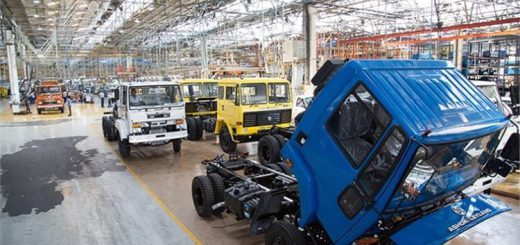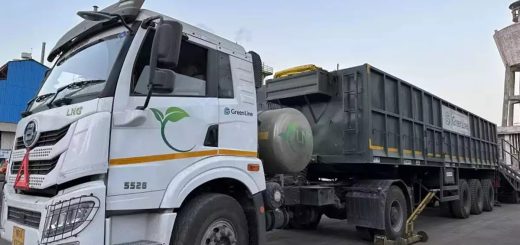How an Agile Supply Chain Simplifies Business Workflows
The current business environment is mad, that is why competition is a real challenge to overcome. Furthermore, today’s traditional techniques for supply chain administration are also inept. After that, that is where agile supply chain management comes into the picture. More importantly, this is the very strategy that enables organizations to have a hidden weapon that ensures they can thrive within a rapidly evolving ecosystem that is changing almost as quickly as a truck driver changes lanes.
What Makes An Agile Supply Chain Special?
Let’s break it down into simple terms that even a long-haul trucker can understand:
Putting Customers First
Initially, the agile supply chain is all about one thing: making customers happy. Also, it is more like knowing what is on the minds of the customers in their patronage of the firm. As such, you are not just transporting goods but are providing value adds that make customers respond – Wow, these guys understand me!
Suppose you are a truck driver; thus, you can quickly change the route when the customer requires something else. That’s the magic of being customer-centered. Moreover, it means:
- Listening carefully to what customers want
- Being ready to change plans quickly
- Delivering exactly what they need, when they need it
Being Flexible Like a Rubber Band
Meanwhile, flexibility is the name of the game. However, this doesn’t mean being wishy-washy. Instead, it means being able to:
- Quickly change your plans
- Adapt to unexpected challenges
- Respond to market changes in real-time
Think of it like a truck that can take multiple routes depending on traffic, weather, or customer needs. Furthermore, this flexibility can save time, money, and headaches.
Communication is King
Subsequently, good communication is like a well-maintained truck – it keeps everything running smoothly. Additionally, this means:
- Breaking down communication barriers
- Sharing information quickly
- Working together across different teams and companies
Benefits That Make a Real Difference
Faster Response to Customer Needs
Initially, an agile supply chain helps you move at lightning speed. Moreover, you can:
- Understand customer needs instantly
- Adjust your operations quickly
- Deliver products faster than ever before
Shorter Wait Times
Furthermore, time is money in the trucking and supply chain world. Consequently, an agile approach helps you:
- Cut down waiting times
- Reduce unnecessary steps
- Get products to customers quicker
Better Quality, Happier Customers
Additionally, when you’re agile, you’re constantly improving. Meanwhile, this means:
- Higher quality products
- More consistent service
- Customers who keep coming back
Also Read:- 6 Supply Chain Order Fulfillment Ways to Boost Your E-Commerce
Challenges You’ll Face (And How to Overcome Them)
Fighting Resistance to Change
However, changing how you do business isn’t easy. Subsequently, you’ll face:
- Employees resistant to new methods
- Old habits that die hard
- Fear of the unknown
Pro Tips:
- Communicate the benefits clearly
- Provide training
- Show real-world examples of success
Handling Complicated Situations
Moreover, an agile supply chain isn’t magic. Consequently, you’ll need to:
- Plan for unexpected events
- Create backup plans
- Stay flexible and ready to adapt
Making Communication Work
Furthermore, good communication takes effort. Additionally, you’ll need to:
- Use modern communication tools
- Have regular check-ins
- Create a culture of openness and transparency
Real-World Success Stories
Consider companies that have transformed their supply chains:
- Tech giants using AI to predict customer needs
- Retailers adapting instantly to market changes
- Manufacturers creating personalized products quickly
Future Trends to Watch
Technology is Changing Everything
Meanwhile, new technologies are revolutionizing supply chains:
- Artificial Intelligence (AI) predicting customer needs
- Blockchain creates more transparent operations
- Internet of Things (IoT) tracking goods in real-time
Sustainability Matters
Moreover, being green is becoming crucial. Consequently, agile supply chains focus on:
- Reducing environmental impact
- Using eco-friendly transportation
- Creating more sustainable processes
Your Action Plan
Step 1: Assess Your Current Setup
- Look at how you currently operate
- Identify areas that need improvement
- Talk to your team about challenges
Step 2: Start Small
- Don’t try to change everything at once
- Pick one or two areas to improve
- Learn and adapt as you go
Step 3: Invest in Training
- Help your team understand agile methods
- Provide tools and resources
- Create a culture of continuous learning
Step 4: Embrace Technology
- Use modern communication tools
- Explore tracking and prediction technologies
- Stay open to new ways of doing things
Final Thoughts
Furthermore, an agile supply chain isn’t just a buzzword. Moreover, it’s a powerful approach to staying competitive in today’s fast-changing world. Subsequently, by being customer-focused, flexible, and communicative, you can transform your business. However, remember: that change takes time. Additionally, be patient with yourself and your team. Consequently, small improvements add up to big results.




Recent Comments